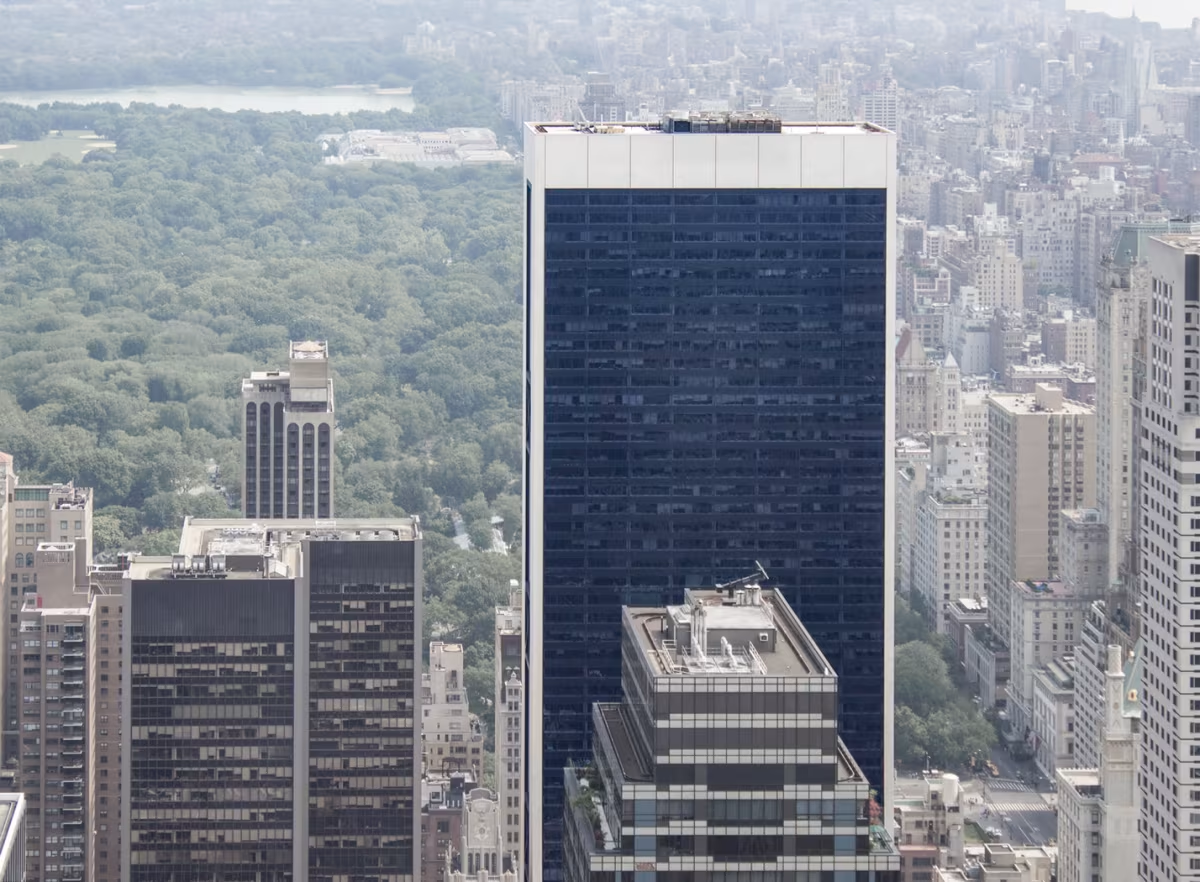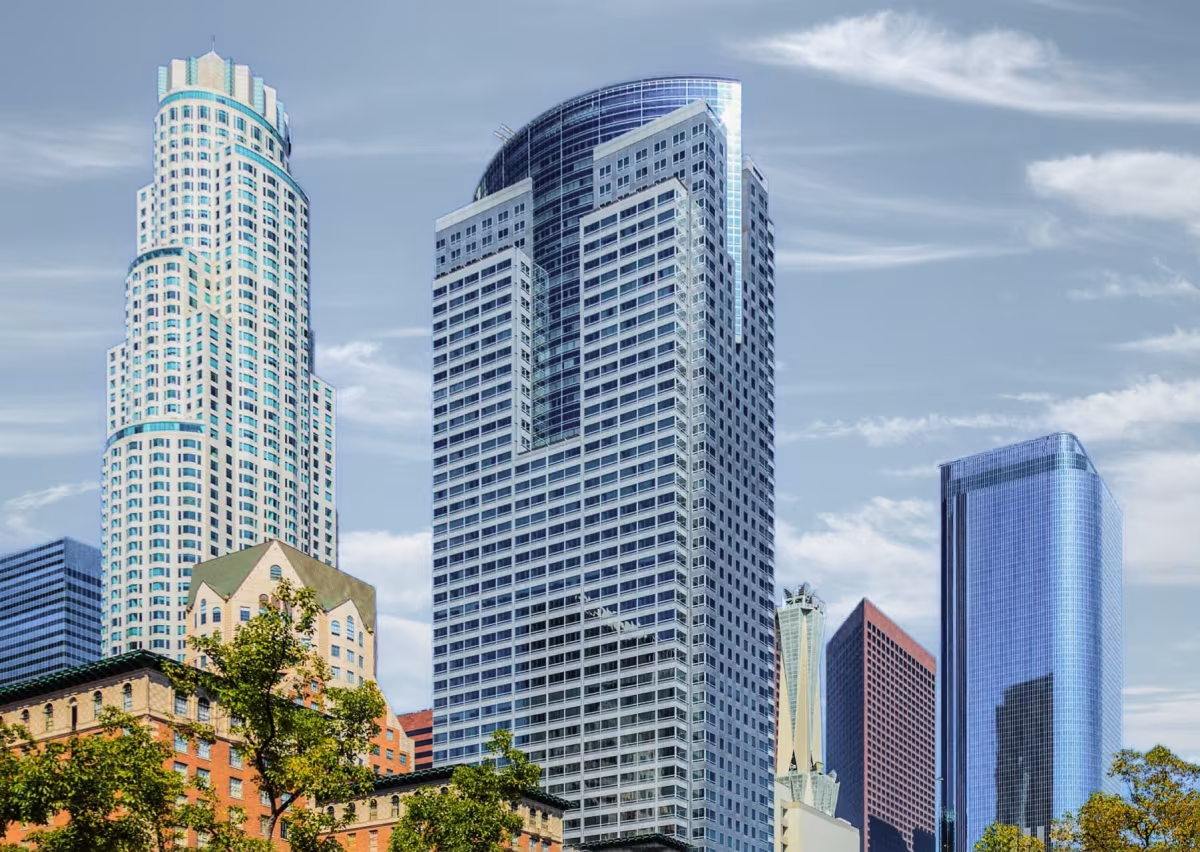Solow Building vs Gas Company Tower


Comparing the Solow Building and the Gas Company Tower is compelling because they were both designed by Skidmore, Owings & Merrill, yet they stand in different cities (New York, NY and Los Angeles, CA), and were completed a decade apart.
What this will allow us to see, is how the same firm's approach adapted to different places in different periods of time.
Height & Size
The Gas Company Tower is clearly the larger tower of the two, both in terms of height and number of floors. It rises to 748ft (228m) with 52 floors above ground, while the Solow Building reaches 673ft (205m) with 49 floors above ground.
Gas Company Tower also offers more total built-up area, a total fo 1,781,748 sqf (165,530m2), which is about 238,087 sqf (22,119m2) more than what the Solow Building offers.
By contrast, the Gas Company Tower sits on a site with a lower floor area ratio.
Of course, each project may have faced different briefs or regulatory constraints, which we don't really know about and could also explain the outcome.
Architectural Style
The Solow Building was designed in the Modern style, while the Gas Company Tower reflects the principles of Postmodernism.
Both towers were built when their respective styles were already past their prime. This makes them feel more like late continuations rather than groundbreaking statements, showing how architectural traditions can linger even as tastes shift.Uses
Both the Solow Building and the Gas Company Tower were designed to serve as commercial towers, and that has remained their main use since their completion, serving similar roles in the urban fabric.
Structure & Facade
The two towers rely on different structural systems, reflecting distinct engineering strategies.
The Solow Building uses a Trussed Frame structural system, which uses diagonal bracing in addition to beams and columns for stability, while the Gas Company Tower uses a Frame system, that relies on a regular grid of columns and beams to sustain its weight.
Yet, when it comes to their facade, they both employed the same solution, a Curtain Wall facade.
A curtain wall is a non-load-bearing facade hung from the structural frame. It is anchored to floor slabs and transfers only its own weight and wind loads, allowing for sleek, glassy exteriors.
| Solow Building | Gas Company Tower | |
|---|---|---|
| Skidmore, Owings & Merrill | Architect | Skidmore, Owings & Merrill |
| 1968 | Construction Started | 1988 |
| 1974 | Year Completed | 1991 |
| Modern | Architectural Style | Postmodernism |
| Commercial | Current Use | Commercial |
| 49 | Floors Above Ground | 52 |
| 1 | Floors Below Ground | 8 |
| 205 m | Height (m) | 228 m |
| 143411 | Built-up Area (m²) | 165530 |
| 34 | Number of Elevators | 28 |
| Trussed Frame | Structure Type | Frame |
| Steel | Vertical Structure Material | Steel |
| Concrete And Steel | Horizontal Structure Material | Concrete |
| No | Facade Structural? | No |
| Glass, Marble, Aluminium | Main Facade Material | Glass, Steel |
| Solow Construction Co. | Main Contractor | Turner Construction |
| Solow Development Corporation | Developer | Thomas Properties Group |
| Ivan Chermayeff | Collaborating Artist | Frank Stella |
| NY | State | CA |
| New York | City | Los Angeles |
| 9 West 57th Street | Address | 555 West 5th Street |